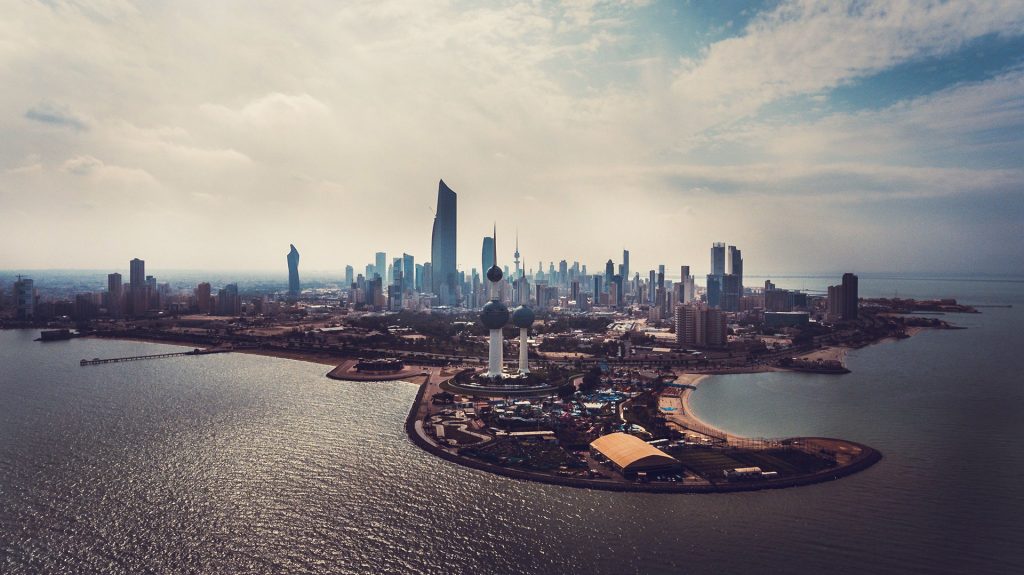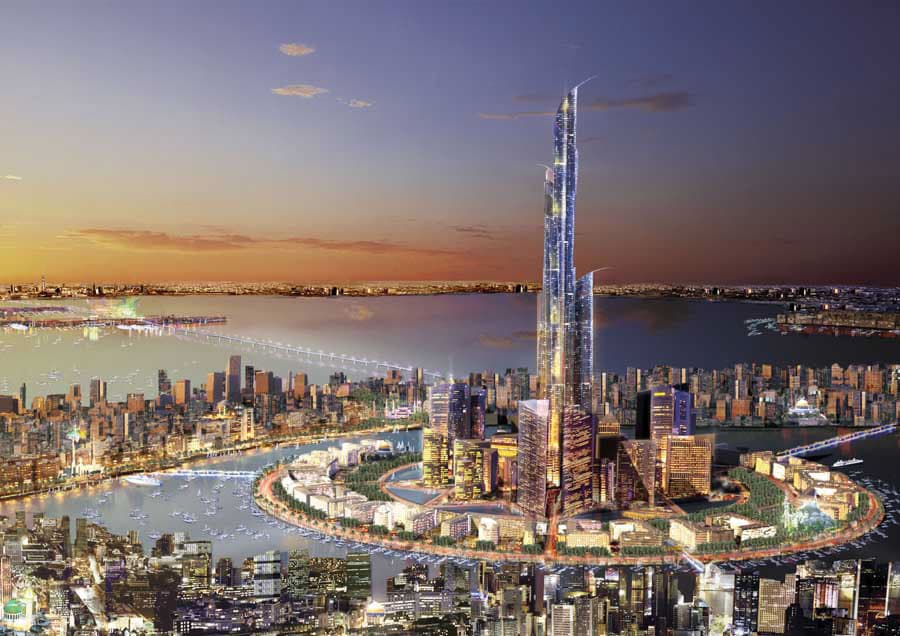
First the causeway.
Then, the port.
And, in due time, a skyscraper: a soaring structure more than a kilometre high that will be the crowning achievement of Madinat Al-Hareer, an ambitious plan by Kuwait’s emir to set the course of his country’s development for the coming decades.
Much like his peers elsewhere in the Arabian Gulf, Sheik Sabah al-Ahmad al-Jaber al-Sabah wants to reduce the economy’s dependence on its enormous oil and gas reserves. His way of doing it is to diversify the economy with the creation of a free economic zone.
Located on the other side of a bay from Kuwait City, the zone is to become a regional hub for trade and finance, linking the Gulf to Central Asia and Europe. Although it takes the name of Madinat Al-Hareer, the zone is better known as Silk City, evoking the old trading route of the same name and emphasising the role that the emir sees it playing.
Attracting Investors
Silk City is slowly taking shape. The causeway – officially the Sheikh Jaber Al-Ahmad Al-Sabah Causeway, the longest of its kind in the world – will open this year, while plans for the Mubarak Al-Kabeer Port are progressing.
In November, Kuwait signed a memorandum of understanding with China to enlist its help in bringing the free economic zone to life. «China is the biggest importer of oil globally and the destination for more than half of the Middle East’s oil exports. It is therefore an important market for Kuwait», reads a comment published by The Economist Intelligence Unit after the signing. «By enhancing co-operation, the Kuwaiti authorities want to showcase increasing efforts being put into making investing and doing business in the country easier».

Attracting foreign direct investment (FDI), whether it be Chinese or otherwise, is crucial for the development of Silk City. «FDI is still underdeveloped in (Kuwait), and we think it is the best thing for the country and the right time to invest», Sheikh Jaber Al Mubarak Al Sabah, Kuwait’s prime minister, was quoted as telling a conference last year by The National, a regional newspaper.
On a government website, the emir is exultant about the possibilities that the zone might offer. «(The plan will transform) Kuwait into a financial and commercial center …(where) the private sector leads the economic activity, encourages the spirit of competition and increases the efficiency of production» he says.
The sectors where Kuwait wants to channel FDI include housing, healthcare, transport, tourism and renewable energy.
Thousands of Jobs
As described in various reports by the Kuwait News Agency (KUNA), the state news agency, Silk City will cover 250 square kilometres in Subiya, an area located on the north shore of Kuwait Bay opposite to Kuwait City. Once opened, the causeway will connect the two shores, shortening travel times and encouraging people to move out of crowded Kuwait City for Subiya.
At an estimated cost of $86 billion (€76.1 billion), Silk City will take time to be complete. A vast project, it will be built in stages during the next 25 years. It will also encompass five islands in the vicinity: Failaka, Warba, Miskan, Awha and Boubyan, the last of which will host the port with 24 berths. «The port …will rejuvenate Kuwait’s role as a primary shipping port», reads a description of the project on the website of AECOM, the U.S. infrastructure group that carried out a feasibility study and developed the design of a deep water navigation channel for the port.
As for the skyscraper, the Mubarak Al-Kabir, it will rise 1,001 meters and have 234 floors. With everything from hotels, residences, offices as well as entertainment amenities, it will be able to house 7,000 people.
The city itself, meanwhile, will have housing for up to 700,000 people.
It will comprise four quarters or villages, according to KUNA. There will be an airport, hotels and resorts, a sports academy, a medical centre, an Olympic Stadium, national parks and nature reserves.
Surrounding the Silk City will be a green belt of gardens and green spaces.
The Economist Intelligence Unit says the zone will be to offer 450,000 jobs.

